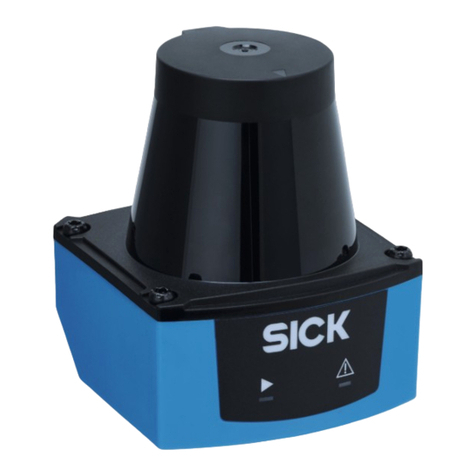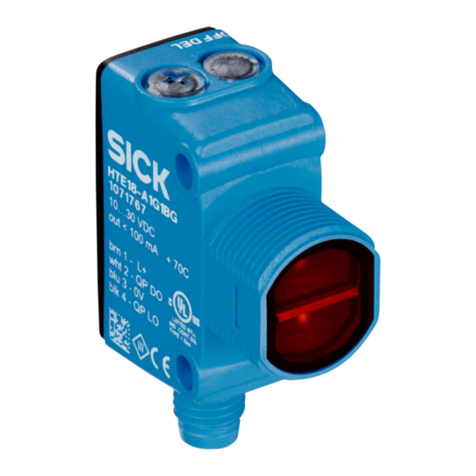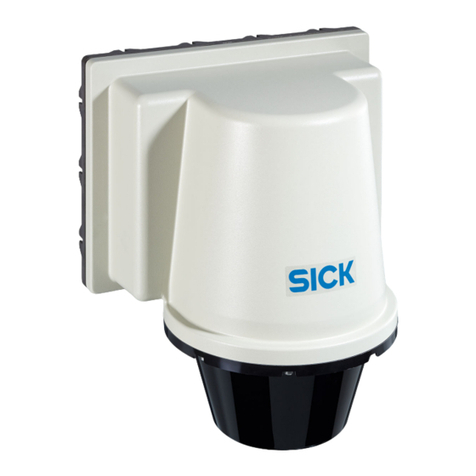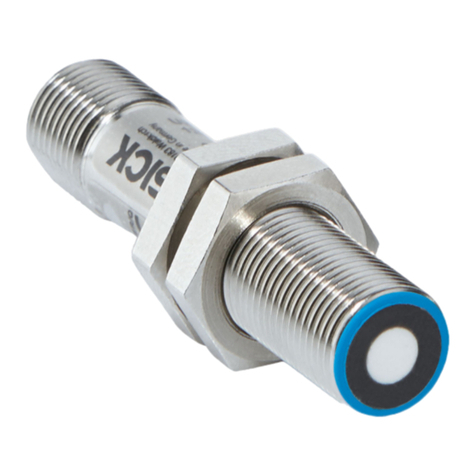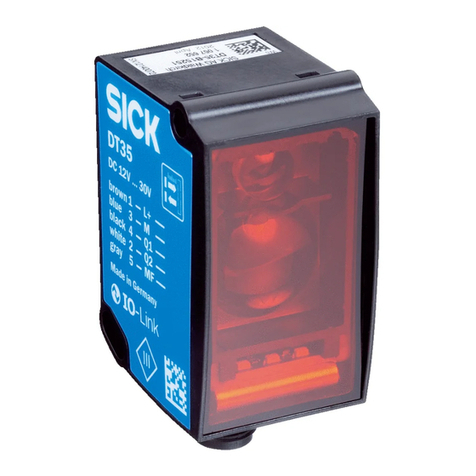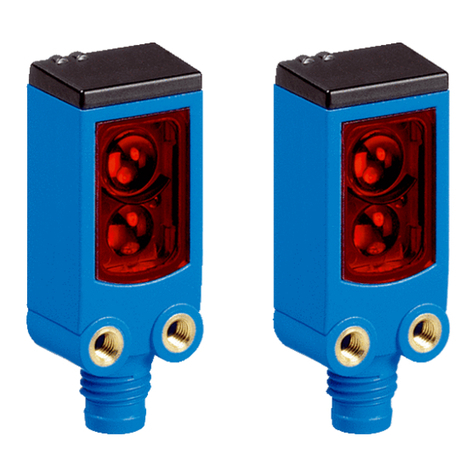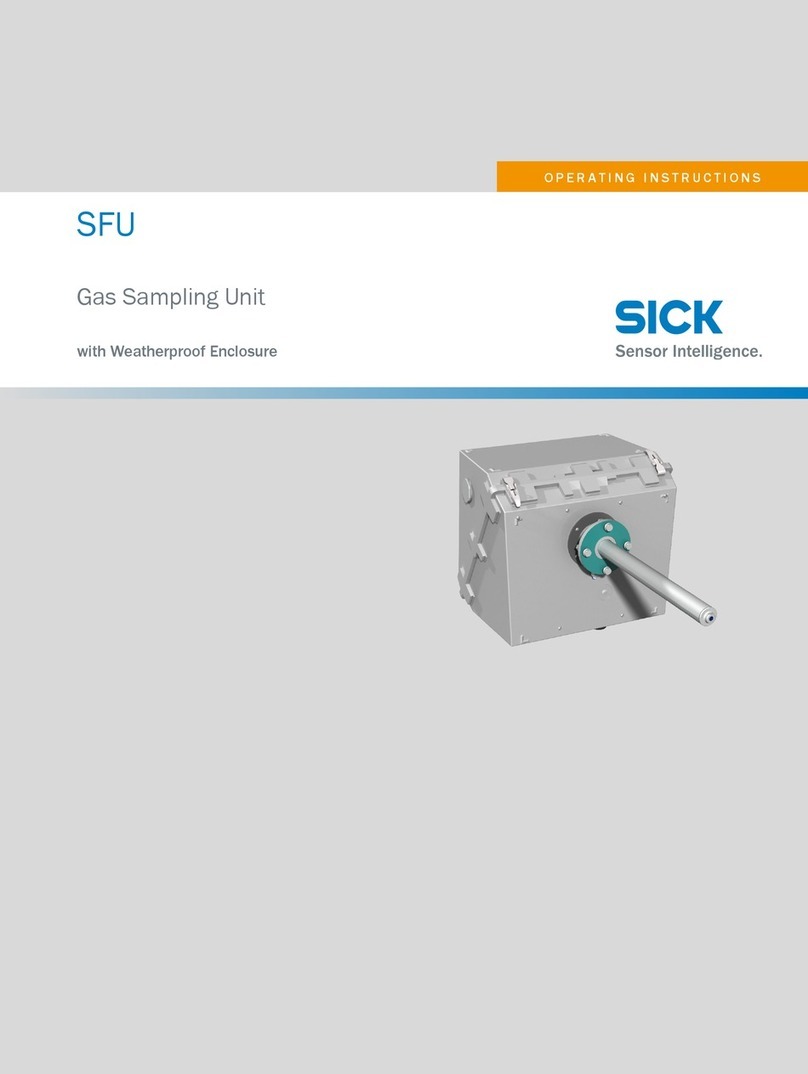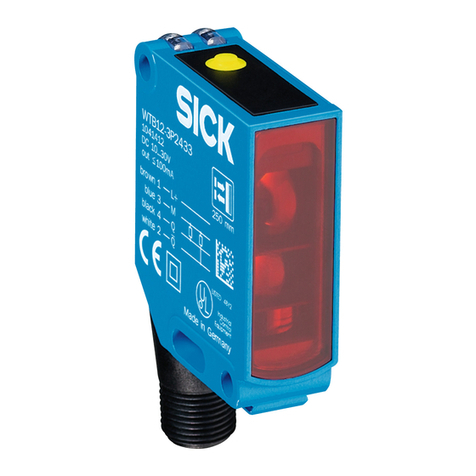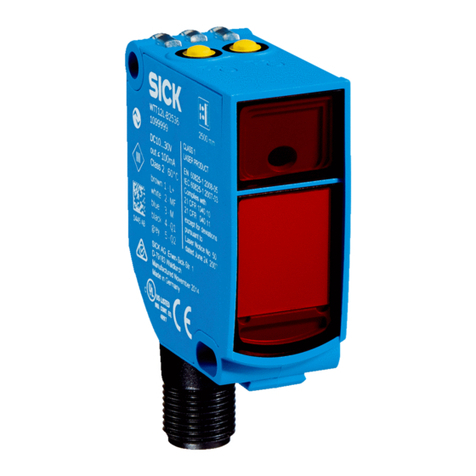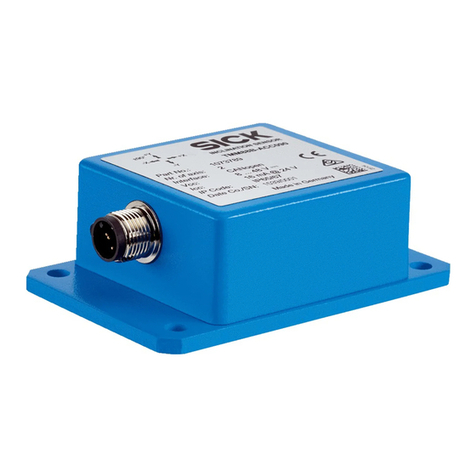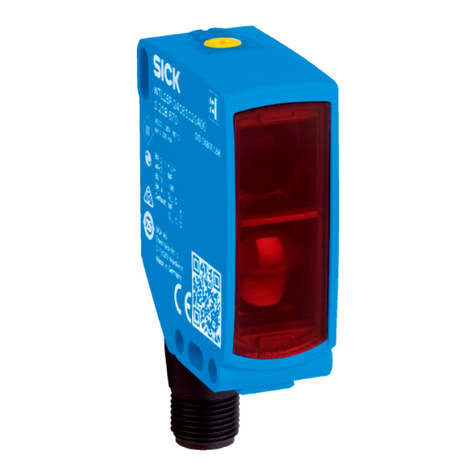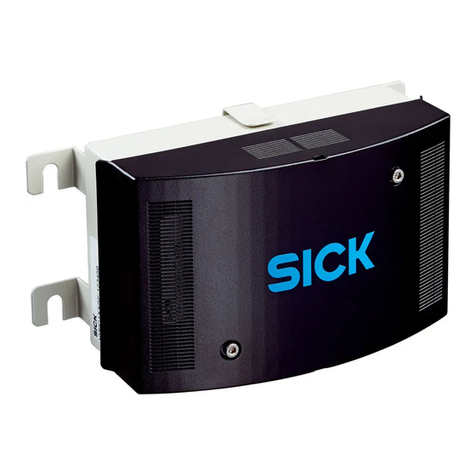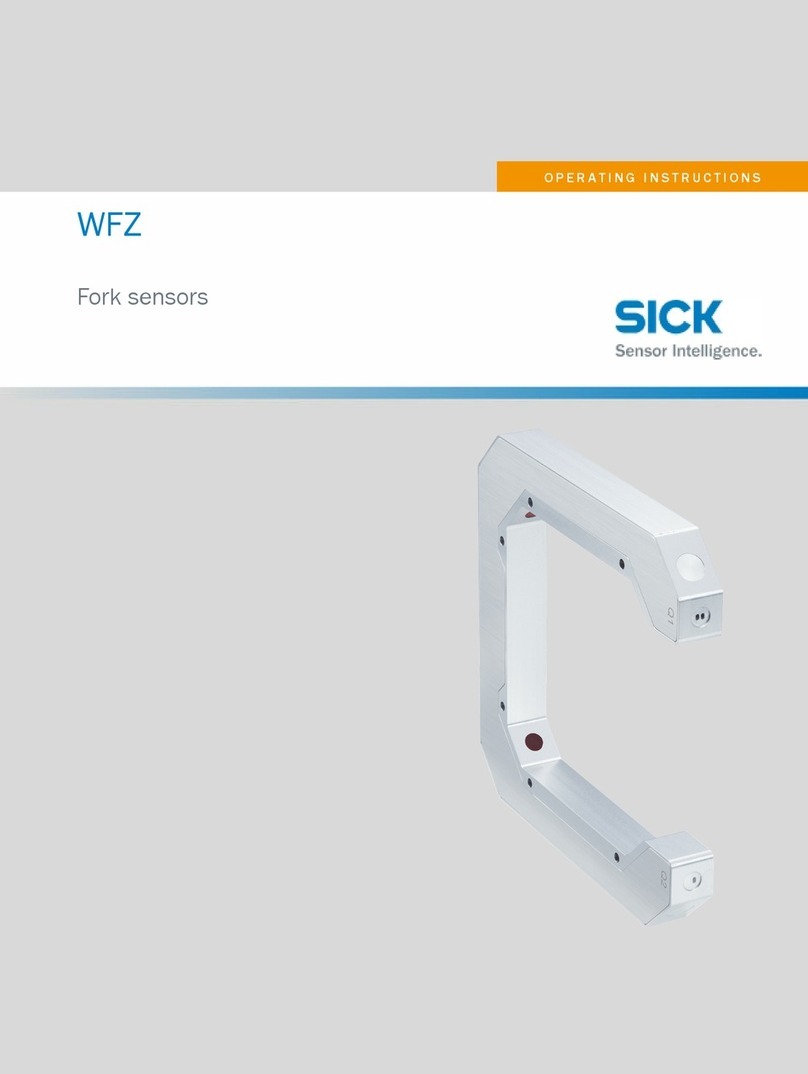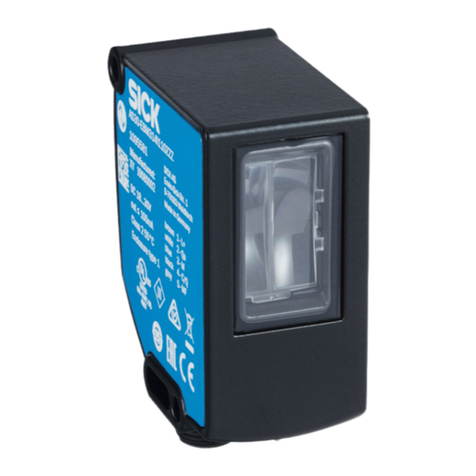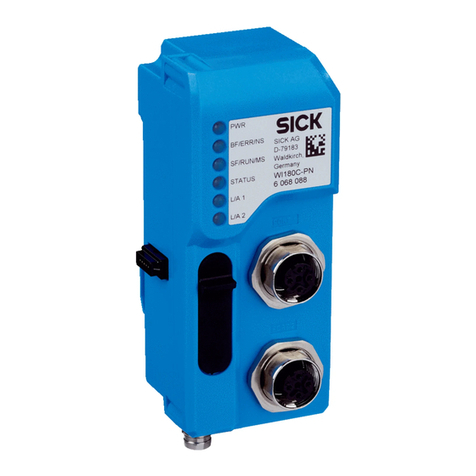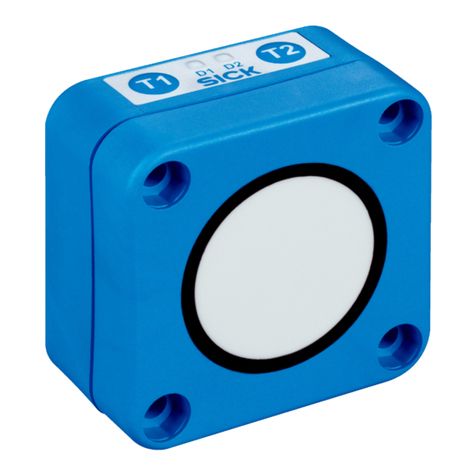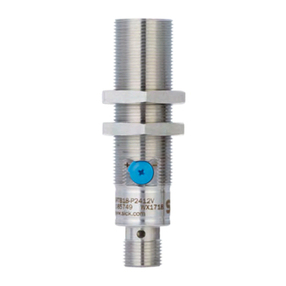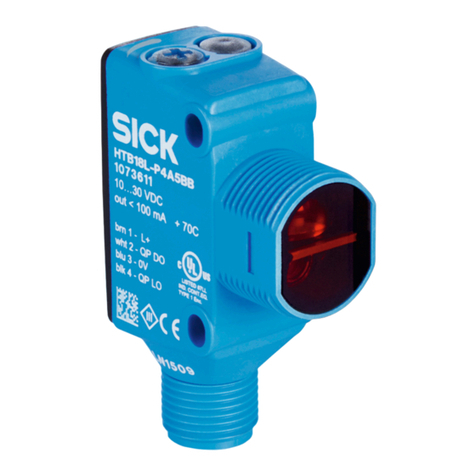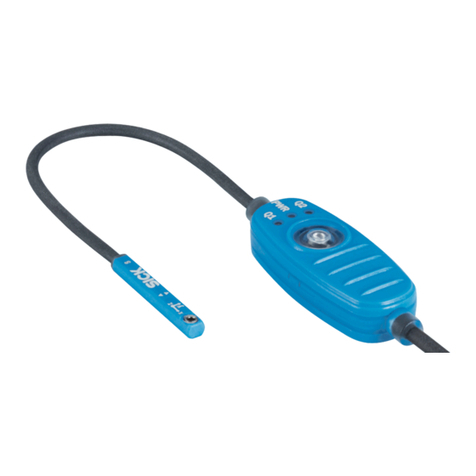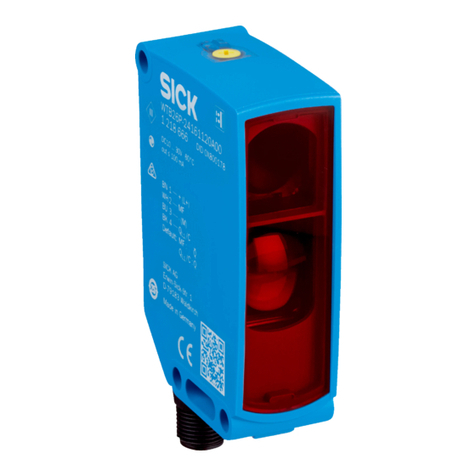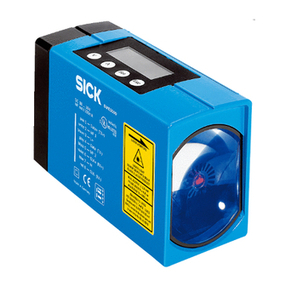
Oper‐
ating
instru
ctions
OPERATING INSTRUCTIONS en
1 About this document
The operating instructions are used to put the product into operation quickly and
easily to get the first measurement results.
1.1 Supplementary and other relevant documents
•AOD1 Quick Start Guide, see www.sick.com/8019684
•AOD1 operating instructions, see www.sick.com/8020327
Additional information (e.g. application examples, other documents, associated
software) can be found at www.sick.com/OL1.
2 Safety information
2.1 Intended use
The optical OL1 micrometer is used for optical, non-contact thickness measure‐
ment and position determination.
The device can only be used in conjunction with the AOD1 evaluation unit. Up to
two sets of OL1 measurement sensors can be configured and controlled with the
evaluation unit.
SICK AG assumes no liability for losses or damage arising from the use of the
product, either directly or indirectly. This applies in particular to use of the product
that does not conform to its intended purpose and is not described in this docu‐
mentation.
2.2 Improper use
Any use outside of the stated areas, in particular use outside of the technical
specifications and the requirements for intended use, will be deemed to be incor‐
rect use.
•The device does not constitute a safety component in accordance with the
respective applicable safety standards for machines.
•The device must not be used in explosion-hazardous areas, in corrosive envi‐
ronments or under extreme environmental conditions.
•Any use of accessories not specifically approved by SICK AG is at your own
risk.
WARNING
Danger due to improper use!
Any improper use can result in dangerous situations.
Therefore, observe the following information:
•Product should be used only in accordance with its intended use.
•All information in these operating instructions must be strictly observed.
•Shut down the product immediately in case of damage.
2.3 Internet protocol (IP) technology
NOTE
SICK uses standard IP technology in its products. The emphasis is placed on
availability of products and services.
SICK always assumes the following prerequisites:
•The customer ensures the integrity and confidentiality of the data and
rights affected by its own use of the aforementioned products.
•In all cases, the customer implements the appropriate security mea‐
sures, such as network separation, firewalls, virus protection, and patch
management.
2.4 Limitation of liability
Relevant standards and regulations, the latest technological developments, and
our many years of knowledge and experience have all been taken into account
when compiling the data and information contained in these operating instruc‐
tions. The manufacturer accepts no liability for damage caused by:
•Non-adherence to the product documentation (e.g., operating instructions)
•Incorrect use
•Use of untrained staff
•Unauthorized conversions or repair
•Technical modifications
•Use of unauthorized spare parts, consumables, and accessories
With special variants, where optional extras have been ordered, or owing to the
latest technical changes, the actual scope of delivery may vary from the features
and illustrations shown here.
2.5 Modifications and conversions
NOTICE
Modifications and conversions to the device may result in unforeseeable dan‐
gers.
Interrupting or modifying the device or SICK software will invalidate any warranty
claims against SICK AG. This applies in particular to opening the housing, even as
part of mounting and electrical installation.
2.6 Requirements for skilled persons and operating personnel
WARNING
Risk of injury due to insufficient training.
Improper handling of the device may result in considerable personal injury
and material damage.
•All work must only ever be carried out by the stipulated persons.
This product documentation refers to the following qualification requirements for
the various activities associated with the device:
•Instructed personnel have been briefed by the operator about the tasks
assigned to them and about potential dangers arising from improper action.
•Skilled personnel have the specialist training, skills, and experience, as well as
knowledge of the relevant regulations, to be able to perform tasks delegated
to them and to detect and avoid any potential dangers independently.
•Electricians have the specialist training, skills, and experience, as well as
knowledge of the relevant standards and provisions, to be able to carry out
work on electrical systems and to detect and avoid any potential dangers
independently. The electrician must comply with the provisions of the locally
applicable work safety regulation.
The following qualifications are required for various activities:
Activities and technical requirements
Activities Qualification
Mounting, maintenance •Basic practical technical training
•Knowledge of the current safety regulations in the workplace
Electrical installation,
device replacement
•Practical electrical training
•Knowledge of current electrical safety regulations
•Knowledge of the operation and control of the devices in
their particular application
Commissioning, configu‐
ration
•Basic knowledge of the computer operating system used
•Basic knowledge of the design and setup of the described
connections and interfaces
•Basic knowledge of data transmission
Operation of the device for
the particular application
•Knowledge of the operation and control of the devices in
their particular application
•Knowledge of the software and hardware environment for
the particular application
2.7 Operational safety and particular hazards
Please observe the safety notes and the warnings listed here and in other chap‐
ters of this product documentation to reduce the possibility of risks to health and
avoid dangerous situations.
CAUTION
Optical radiation: Laser class 1
The accessible radiation does not pose a danger when viewed directly for up
to 100 seconds. It may pose a danger to the eyes and skin in the event of
incorrect use.
•Do not open the housing. Opening the housing may increase the level of
risk.
•Current national regulations regarding laser protection must be
observed.
Caution – Use of controls or adjustments or performance of procedures other
than those specified herein may result in hazardous radiation exposure.
WARNING
Electrical voltage!
Electrical voltage can cause severe injury or death.
•Work on electrical systems must only be performed by qualified electri‐
cians.
•The power supply must be disconnected when attaching and detaching
electrical connections.
•The product must only be connected to a voltage supply as set out in the
requirements in the operating instructions.
•National and regional regulations must be complied with.
•Safety requirements relating to work on electrical systems must be com‐
plied with.
WARNING
Risk of injury and damage caused by potential equalization currents!
Improper grounding can lead to dangerous equipotential bonding currents,
which may in turn lead to dangerous voltages on metallic surfaces, such as
the housing. Electrical voltage can cause severe injury or death.
•Work on electrical systems must only be performed by qualified electri‐
cians.
•Follow the notes in the operating instructions.
•Install the grounding for the product and the system in accordance with
national and regional regulations.
3 Commissioning
Ensure that installation is done by a qualified person.
8022330/17Y7/2020-07-10/en OL1 | SICK 1
8022330/17Y7/2020-07-10
www.sick.com
OL1
-Straße 1
D-79183 Waldkirch
